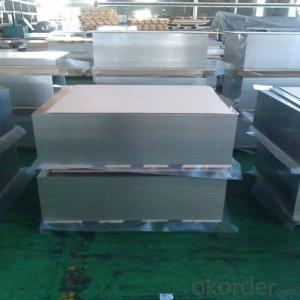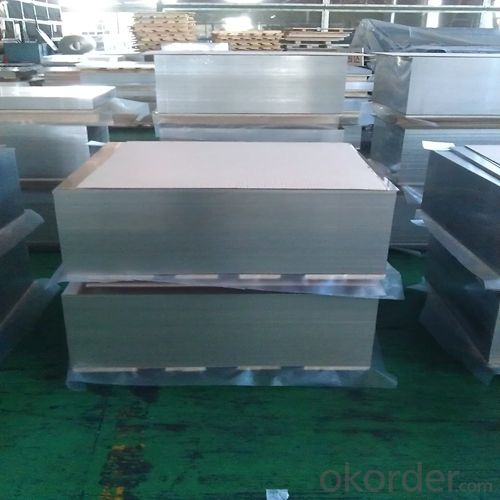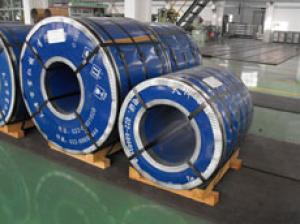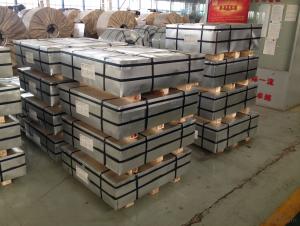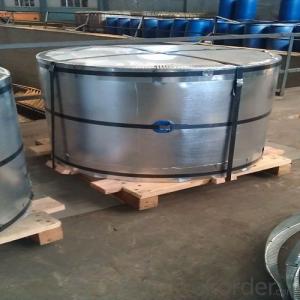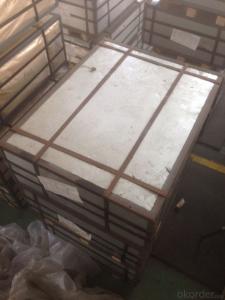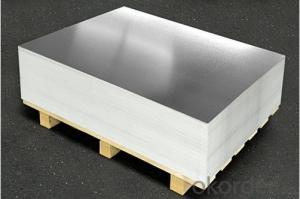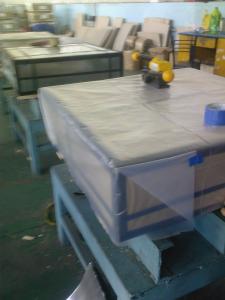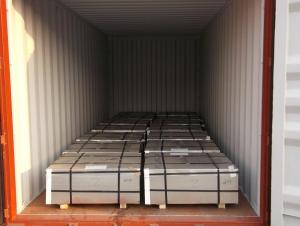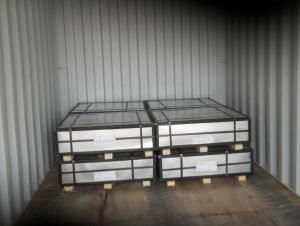Electrolytic Tinplate Sheets for Metal Package 0.20 Thickness
- Loading Port:
- Qingdao
- Payment Terms:
- TT OR LC
- Min Order Qty:
- 25 m.t.
- Supply Capability:
- 30000 m.t./month
OKorder Service Pledge
OKorder Financial Service
You Might Also Like
1.Structure of Electrolytic Tinplate Sheets for Metal Package 0.20 Thickness Description
Electrolytic Tinplate, is one thin steel sheet with a coating of tin applied by electrolytic deposition. Tinplate made by this process is essentially a sandwich in which the central core is strip steel. This core is cleaned in a pickling solution and then fed through tanks containing electrolyte, where tin is deposited on both sides. As the strip passes between high-frequency electric induction coils, it is heated so that the tin coating melts and flows to form a lustrous coat.
2.Main Features of the Electrolytic Tinplate Sheets for Metal Package 0.20 Thickness
Appearance – Tinplate is characterized by its beautiful metallic luster. Products with various kinds of surface roughness are produced by selecting the surface finish of the substrate steel sheet.
Paintability and printability – Tinplates have excellent paintability and printability. Printing is beautifully finished using various lacquers and inks.
Formability and strength – Tinplates have got very good formability and strength. By selecting a proper temper grade, appropriate formability is obtained for different applications as well as the required strength after forming.
Corrosion resistance – Tinplate has got good corrosion resistance. By selecting a proper coating weight, appropriate corrosion resistance is obtained against container contents. Coated items should meet 24 hour 5 % salt spray requirement.
Solderability and weldability – Tinplates can be joined both by soldering or welding. These properties of tinplate are used for making various types of cans.
Hygienic – Tin coating provides good and non toxic barrier properties to protect food products from impurities, bacteria, moisture, light and odours.
Safe – Tinplate being low weight and high strength makes food cans easy to ship and transport.
Eco friendly – Tinplate offers 100 % recyclability.
Tin is not good for low temperature applications since it changes structure and loses adhesion when exposed to temperatures below – 40 deg C.
3.Electrolytic Tinplate Sheets for Metal Package 0.20 Thickness Images
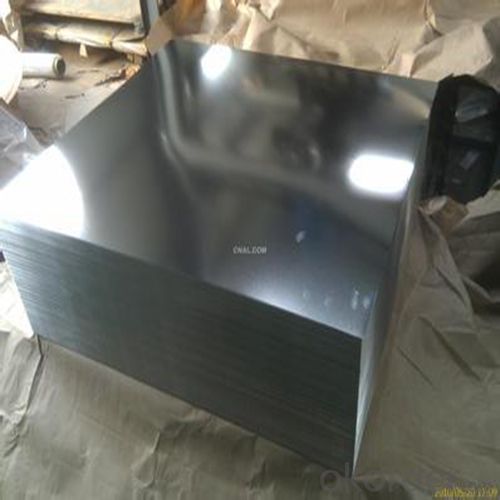

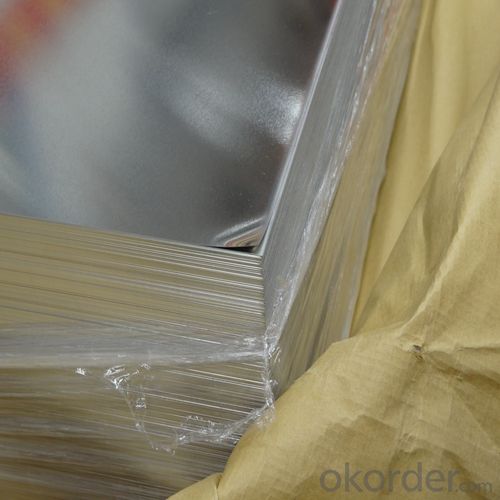
4.Electrolytic Tinplate Sheets for Metal Package 0.20 Thickness Specification
Specification of :
Standard: ISO 11949 -1995, GB/T2520-2000,JIS G3303,ASTM A623, BS EN 10202
Material: SPCC
Thickness:0.20mm
Width: 600mm -1150mm
Temper: T5
Annealing: CA
Coil Inner Diameter: 508mm
Weight: 6-10 tons/coil 1~1.7 tons/sheets bundle
Passivation:311
Oil: DOS
Surface: Finish,bright,stone,matte,silver
5.FAQ of Electrolytic Tinplate Sheets for Metal Package 0.20 Thickness
- How are the tinplates specified?
The tinplates are specified as per the steel base, extent of tempering, the coating weight, annealing method and the surface finish.
- How many types there are for base steels?
The base steels are of three types: Type MR, L, D
- Q: What are the environmental impacts of tinplate production?
- The production of tinplate has several significant environmental impacts. Firstly, the extraction of tin from its ore requires extensive mining operations, which can result in habitat destruction, soil erosion, and water pollution. Additionally, the smelting process releases various air pollutants, including sulfur dioxide and particulate matter, contributing to air pollution and potentially causing respiratory issues. Furthermore, the tin coating process involves the use of chemicals, such as acids and solvents, which can lead to water contamination if not properly managed. Lastly, the disposal of tinplate waste, including scrap and byproducts, can pose challenges in terms of proper handling and recycling, potentially leading to landfill accumulation. Overall, the environmental impacts of tinplate production underline the importance of adopting sustainable practices and promoting circular economy principles in this industry.
- Q: What are the different ways to recycle tinplate containers?
- There are several ways to recycle tinplate containers. One way is to separate the tinplate from other materials, such as plastic or paper, and then melt it down to be reused for manufacturing new tinplate products. Another method involves crushing the containers to reduce their size, which makes it easier to transport and process them at recycling facilities. Additionally, tinplate containers can be repurposed for various uses, such as storage or organization, before eventually being recycled.
- Q: What are the different types of tinplate containers available?
- There are several types of tinplate containers available, including cans, tins, drums, and pails. These containers can vary in size, shape, and design to suit different purposes and industries.
- Q: How is tinplate coated with metallic coatings?
- Tinplate is coated with metallic coatings through a process called electroplating, where a layer of metal is deposited onto the tinplate surface using an electrolytic bath. This bath contains ions of the desired coating metal, which are attracted to the tinplate and form a thin and uniform layer through the application of an electric current. This electroplating process helps to enhance the durability, corrosion resistance, and aesthetic appearance of the tinplate.
- Q: What are the different tinplate grades available in the market?
- There are several different tinplate grades available in the market, including prime quality, secondary quality, and surplus quality. Prime quality tinplate is the highest grade and is typically used for food packaging and other high-quality applications. Secondary quality tinplate may have minor imperfections but is still suitable for a wide range of applications. Surplus quality tinplate is typically sold at a lower price and may have more noticeable imperfections, making it suitable for less demanding uses.
- Q: Can tinplate be used for packaging of chemicals?
- Yes, tinplate can be used for packaging of chemicals. Tinplate is known for its excellent resistance to corrosion and its ability to protect the contents from external factors such as moisture, light, and oxygen. It is commonly used in the packaging industry, including for the storage and transportation of various chemicals.
- Q: Can tinplate be used for aerosol cans?
- Yes, tinplate can be used for aerosol cans. Tinplate is a type of steel coated with a thin layer of tin, which provides excellent corrosion resistance and makes it suitable for packaging products like aerosol cans.
- Q: What are the different ways to stack tinplate cans?
- There are several different ways to stack tinplate cans, including vertically, horizontally, in a pyramid formation, or in a grid pattern. The choice of stacking method may depend on factors such as available space, stability required, or ease of access.
- Q: What are the common printing and decoration techniques for tinplate?
- Some common printing and decoration techniques for tinplate include lithography, offset printing, embossing, debossing, hot stamping, and varnishing. These techniques allow for vibrant and detailed designs to be applied to tinplate surfaces, making them visually appealing and customizable for various products and purposes.
- Q: How does tinplate packaging contribute to product protection against odors?
- Tinplate packaging contributes to product protection against odors due to its ability to create a barrier between the product and the external environment. The non-porous nature of tinplate prevents the penetration of odorous substances, ensuring that the product remains uncontaminated and free from any unwanted smells. Additionally, tinplate packaging is often coated with a protective layer, further enhancing its ability to prevent odor transfer.
Send your message to us
Electrolytic Tinplate Sheets for Metal Package 0.20 Thickness
- Loading Port:
- Qingdao
- Payment Terms:
- TT OR LC
- Min Order Qty:
- 25 m.t.
- Supply Capability:
- 30000 m.t./month
OKorder Service Pledge
OKorder Financial Service
Similar products
Hot products
Hot Searches
Related keywords
